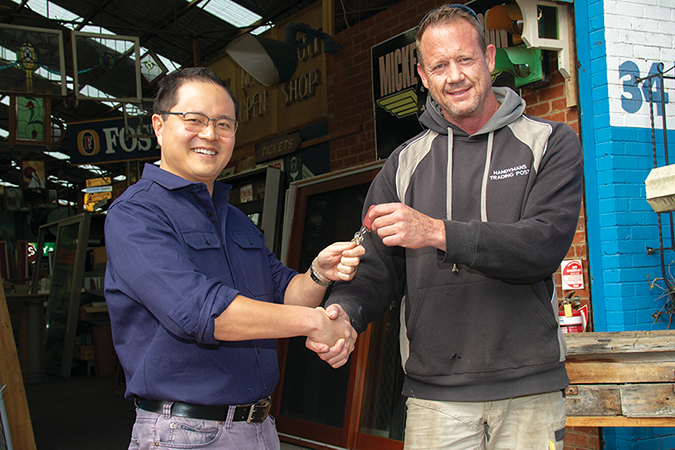
Electricity powers our homes, keeping our lights on, devices charged and appliances running. But as essential as it is, electricity can be dangerous if not handled with care, says GABRIEL TAN, of Metropolitan Electrical Contractors.
From overloaded circuits to damaged wires, everyday electrical hazards can lead to serious injuries, fires or worse. That’s why understanding basic electrical safety is a must for every homeowner.
By following a few simple tips, you can protect your home, loved ones, and belongings from avoidable accidents.
In this guide, we’ll cover practical electrical safety advice, including how to spot potential risks, maintain your home’s electrical system, and know when it’s time to call a professional electrician.
Whether you’re a new homeowner or just brushing up on safety practices, these tips will help you stay informed and secure.
Understand your home’s electrical system
Having a basic understanding of your home’s electrical system is essential for safety and efficiency. Here are key aspects every homeowner should know:
- Locate your main electrical panel: The main panel is the hub of your home’s electrical system. It’s where you can shut off power in an emergency or reset tripped breakers.
- Understand circuit breakers and fuses: These safety devices protect your home by cutting off electricity if there’s an overload or short circuit. Learn how to reset breakers and check for blown fuses.
- Identify high-energy appliances: Appliances such as ovens, air conditioners, and dryers often have dedicated circuits. Avoid overloading these to prevent tripping.
- Label circuits: Clearly label which breaker controls which area of your home. This saves time during maintenance or emergencies.
- Know the warning signs of trouble: According to www.metropolitanelectrical.com.au, flickering lights, buzzing sounds or frequent breaker trips are red flags that require attention.
Being informed about your electrical system helps you troubleshoot minor issues and recognise when to call a professional.
Avoid overloading circuits
Overloading circuits is a common electrical hazard in many homes. When you plug in too many devices or appliances into a single circuit, it can strain your electrical system, leading to tripped breakers, blown fuses, or even electrical fires.
Recognising the signs of an overloaded circuit is key to preventing issues. Look out for flickering lights, buzzing outlets or frequently tripped breakers − these are red flags that your circuit may be over capacity.
To avoid overloading, spread your electrical load across multiple outlets and circuits. Avoid daisy-chaining power strips or plugging high-energy appliances, such as space heaters or microwaves, into the same outlet. If you frequently run out of plug space, consider having additional outlets installed by a licensed electrician.
Remember, your home’s electrical system has limits. Being mindful of those limits can protect your home from damage and keep your family safe from electrical risks.
Use the right extension cords and power strips
Choosing the right extension cords and power strips is crucial for maintaining electrical safety. Improper use can lead to overheating, fires or damage to your devices.
Here are some essential tips:
- Match the cord to the job: Use indoor extension cords for inside tasks and outdoor-rated cords for exterior use. Outdoor cords are designed to handle moisture and extreme temperatures.
- Check the wattage: Ensure the extension cord can handle the combined wattage of the devices plugged into it. Overloading cords can cause overheating and fires.
- Avoid daisy-chaining: Never connect multiple extension cords or power strips together. This creates a dangerous risk of circuit overload.
- Inspect for damage: Regularly check cords for frayed wires, cracks or exposed conductors. Replace damaged cords immediately.
- Don’t use long-term: Extension cords are for temporary use. For permanent solutions, install additional outlets with the help of an electrician.
Following these tips can prevent accidents and keep your home’s electrical system safe.
Childproofing electrical outlets
Protecting curious little hands from electrical outlets is an essential safety step for any home with children. Here are practical tips to childproof your outlets and prevent accidents:
- Install outlet covers: Use plug-in outlet caps or sliding outlet covers to block access to unused outlets. These are affordable and easy to install.
- Upgrade to tamper-resistant outlets (TROs): TROs are designed with built-in safety mechanisms that prevent objects from being inserted into the slots. These are a must-have for childproofing.
- Hide outlets behind furniture: Whenever possible, position heavy furniture to block access to wall outlets, keeping them out of sight and reach.
- Teach kids about electrical safety: Help children understand that outlets and cords are not toys. Simple lessons can go a long way in preventing accidents.
- Secure power strips: Use power strip covers to block unused outlets and prevent unplugging or tampering with cords.
Taking these steps ensures a safer environment for your little ones and gives you peace of mind.
Inspect and replace damaged wiring
Damaged wiring is a hidden hazard that can cause serious electrical problems, including power outages, electric shocks and even fires. Over time, wires can become worn, frayed or damaged by pests, age or poor installation. It’s essential to inspect your home’s wiring regularly to catch issues early.
Look for warning signs such as scorch marks around outlets, flickering lights, a persistent burning smell, or outlets that feel warm to the touch. If you spot any of these, it’s a strong indicator that your wiring needs attention. Never attempt to fix wiring yourself − working with electricity is risky and requires expertise.
Call a licensed electrician to assess and replace damaged wiring. Updating your home’s wiring not only ensures safety but also helps appliances run more efficiently.
Regular inspections and prompt repairs are key to maintaining a safe, reliable electrical system for your home and family.
Be mindful of water and electricity
Water and electricity are a dangerous combination, and even a small mistake can lead to serious accidents. In areas such as kitchens, bathrooms, and outdoor spaces, where water and electricity often coexist, extra caution is essential.
Always ensure your hands are dry before using electrical devices and keep appliances such as hairdryers or toasters away from sinks and bathtubs.
Ground fault circuit interrupters (GFCIs) are a lifesaver in wet areas. These outlets are designed to cut power instantly if water or moisture is detected, preventing shocks and potential fires. If your home doesn’t have GFCIs installed, contact an electrician to upgrade your outlets, especially in high-risk areas.
For outdoor spaces, only use weatherproof outlets and extension cords designed for exterior use. And remember − never use electrical devices during a storm or near standing water. These small precautions can make a big difference in keeping your home safe.
Install and test safety devices
Safety devices are essential for protecting your home and family from electrical hazards. Here’s a quick guide to what you need and how to maintain them:
- Install smoke alarms: Place smoke alarms in every bedroom, hallway, and common area. Test them monthly and replace batteries at least once a year.
- Add carbon monoxide detectors: If you use gas appliances, these detectors are critical for identifying harmful leaks. Place them near sleeping areas and check their functionality regularly.
- Use ground fault circuit interrupters (GFCIs): GFCIs are essential for wet areas such as kitchens, bathrooms and outdoor outlets. They prevent electric shock by cutting power when water is detected.
- Surge protectors for electronics: Protect your expensive electronics from power surges by using high-quality surge protectors.
- Test devices regularly: Make a habit of testing all safety devices monthly to ensure they’re working properly and replace outdated units promptly.
By installing and maintaining these devices, you can create a safer home environment for everyone.
Know when to call a professional
While some minor electrical tasks, such as replacing light bulbs, are safe to handle on your own, many electrical issues require the expertise of a licensed electrician. Knowing when to call a professional can protect your home and family from potential hazards.
If you notice signs such as frequent power outages, buzzing sounds from outlets or a persistent burning smell, it’s time to call an electrician.
These could indicate serious problems such as faulty wiring or overloaded circuits that need immediate attention. Flickering lights, tripped breakers or sparking outlets are also warning signs that shouldn’t be ignored.
Attempting DIY fixes on electrical systems without proper training can be dangerous and may even void your insurance coverage. Licensed electricians have the tools and knowledge to safely diagnose and repair issues.
Prioritising safety over saving a few dollars ensures your home remains secure and your electrical system runs efficiently.
Stay proactive and stay safe
Electrical safety is essential for every homeowner, ensuring your home remains a secure and comfortable space for your family.
By understanding your electrical system, using appliances correctly, and addressing potential hazards such as damaged wiring or overloaded circuits, you can prevent accidents and costly repairs.
Installing and maintaining safety devices, such as smoke alarms and GFCIs, adds an extra layer of protection. Remember, when in doubt, always call a licensed electrician to handle complex issues.
Prioritising these safety tips not only safeguards your home but also gives you peace of mind. Stay proactive, stay informed and keep your home electrically safe.
Who can be trusted?
In a world of spin and confusion, there’s never been a more important time to support independent journalism in Canberra.
If you trust our work online and want to enforce the power of independent voices, I invite you to make a small contribution.
Every dollar of support is invested back into our journalism to help keep citynews.com.au strong and free.
Thank you,
Ian Meikle, editor








Leave a Reply